I posted a few weeks ago about this, now just getting around to testing the texture tonight. A co worker has a Texture Pro hopper gun by Walboard. Attached are a few pics. I am using a tip that has .25″ opening, the largest he has. The area I am doign first is in a walk in closet, not so picky here but the bathroom other side of wall is critical to blend in as best as I can.
I mixed mud to oatmeal consistancy and get small grouped together mud plater that pretty much covers the entire area. (see attached pic) The air is set at 25psi.
I mixed in very little water – not much of a difference.
I experimented with flicking it on(attached is a pic)
Also attached is the texture of the eniter home which I am attempting to match, my hand is in the pic to show scale. The texture looks very thick blobs that have been knocked down with alot of area between – not so close and thick.
Any ideas to pass on?
thansk again for the all the help.
Chris
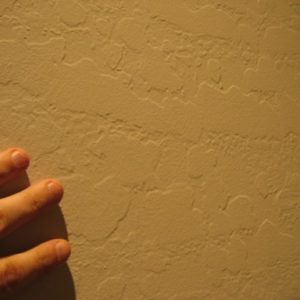
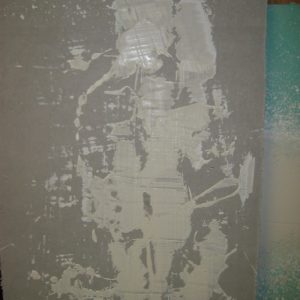
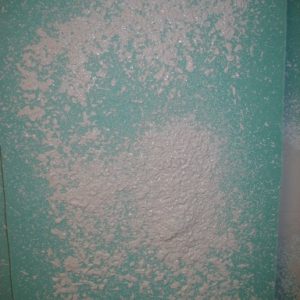


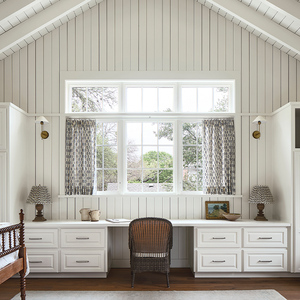
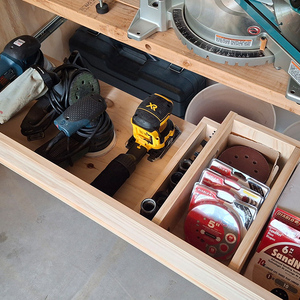
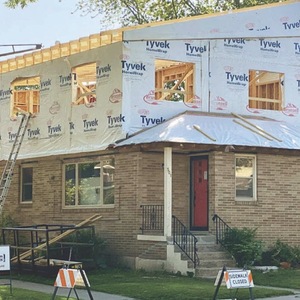
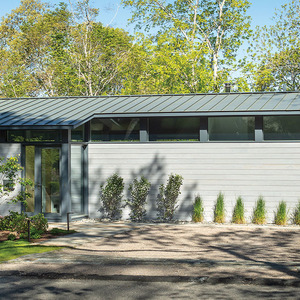













Replies
I was just going to say that first pic looked ok then I read it was the existing. Roar!
Tim or others should be along to help you out.
Cheers
every court needs a jester
Are you trying to match the existing? (new here missed first part)
1muff...
I am remodeling a master bath and added a pocket door to a closet, the walls are vaulted and need to blend in the texture. I hate texturing, now spending the time trying to get the hang of it. I only need to blend in a 8 sq ft of wall.
sorry, can't comment on the mix. How long did you wait till you knocked it down. Looks like it was too soft when you hit it.
A great place for Information, Comraderie, and a sucker punch.
Remodeling Contractor just outside the Glass City.
http://www.quittintime.com/
Your existing reminds me of afloor leveling mix I used years ago. It would go from a liquid to a solid about 30 seconds after a wet mix. Flick it, and hit it with trowel.
What are you knocking it down with? A lightweight knockdown blade is much easier to use than a 12" knife. The key is waiting until it's starting to firm up, but not so firm that it can't be flattened.
Practice with slight variations until you get it.
I like a little more pressure (50 lbs) and simply adjust the air delivery ball valve to what works best.
Beer was created so carpenters wouldn't rule the world.
I am using a large heavy staright edge knife that the co worker had stuck in the box, so scraping the set mud(20-30min) at 45 deg. I will increase the air flow.
You think thickening the mud(less water) would give me the heavy blobs?
I am no expert and I may well be wrong but I am thinking that what you have in the existing is not a sprayed on texture that was knocked down. It looks more like a hand applied "brocade" .
A "brocade" here is put on by using a simple tool that looks like an plaster hawk with carpet ot plastic wrapped over the top of it, after applying the mud the mud is "knocked down" using a broad knife.
Similiar to the old hand plastered look that was done with a plasterers trowel in a "skip" fashion.
Dovetail,
This is a semi track Phoenix, AZ home(1995), so figure guys tear through these houses pretty fast. My guess it would be with a hopper. I will have to reseach Brocade technique a little more.
chris
Like I said I may be wrong. But tracks here have been done with brocade quite often.
Heavier mix , not as wet , bit more air, stand back about 4', let it "skin" a bit before knocking down .
Come to think of it I was pretty close to these test baords, standing back may give me the blobing effect I need.
I've had good luck with the mud thinned to where it fell back together as soon as you drug a finger thru it. HO has done the whole house, with different helpers We tried around 30 to 35 psi
The "Thick Splatter.jpg" looks more like the "orange peel" texture I have in my bathrooms.
Please keep posting your progress, and mistakes... we all can learn from both.
Rebuilding my home in Cypress, CA
Also a CRX fanatic!
I'm not an expert but it sounds like you need to thin out the mudd and go to a smaller hole and about 45 lbs pressure. You really don't want to wait too long before knocking the mudd down. Keep the blade almost perpendicular to the wall and just let it glide over the mudd.
Get some cardboard and practice getting the mix just right. I find that usually the problem I tend to have is not getting the mudd thin enough.
Good luck with a little experimenting it will turn out great.
I was thinking the same thing, thinning the mud a little will let the mud spread out more easily.
Beer was created so carpenters wouldn't rule the world.
I am not an expert by any means but I did do all the ceilings in my house to achieve what you are after.
I first put on a thin layer of drywall mud (about 4'x4' area), then use a tile float and push it into the mud and then pull down quickly. This leaves an even look of pointed mud. After about 20 mins or so, I use a 12" drywall tool to flatten the points. The finished look is what we call "California" finish.
It actually came out very well and after using the textured look in a few houses I built, this is quite a change. I do have a hopper and tried it once and was not successful so used the above approach.
If you only have a small area, you could easily match it using this technique.
What is the 12" drywall tool you use for flattening the points?
I've been using that exact technique for years now and never knew it had a name. Like the true random effect and makes it easy to match late in the event of a patch.
every court needs a jester
The 12" tool is just a normal 12" mud applicator only I rounded out the two corners. Without the rounded corners, I got marks from the corners. When the mud dried to fairly hard, I just used the applicator to flatten the surface. Almost no pressure applied.
When I applied the mud to the drywall, I liked it nice and sticky....not too thin....that way the float pulled the mud down nice. If you have it too thin, it took too long to dry and if I flattened it when too wet, it gave too large an area of flat spots.
All in all, took some practice to get everything right but the job, when done, is very nice.
Thanks all for the good input. I will let you know how this turns out.
Yes, I like a lightweight plastic straightedge with the rounded corners to help prevent the errant occasional straightline that always wants to crop up if the feathertouch ever gets a bit too heavy. Roar!
I use a wooden float with rounded convex edges to level the mix and pull for the pucker power to make the mountain caps.
Started doing walls the same way and find that people often will stop walking and stare at it, then usually a positive comment about those walls.
I haven't experimented with it yet but it seems to me that a sculpted design or scenery pic, or even a shadowbox type drywall paste side profile portrait of Marilyn could be hidden in those random patterns only viewable if one is looking for it.
be a wild thought
every court needs a jester
You mentioned that you do walls that way also......here's what I did with a wall that is 10' along one wall and they goes to 20' high for the gable end....inside walls.
I mix drywall mud with stuff used for texture ceiling spray then use a 6" drywall knife to apply it to the wall.....the texture mix keeps the sheen off the wall that drywall mud seems to make it. I use random strokes with the 6" knife to apply it so that you see the ridges and strokes of the knife. Painting is a real PITA as I found I could only use a brush to get into the ridges but have two walls done in deep maroon that is really nice looking.
All in all, it is amazing what one can do with little money and some imagination.